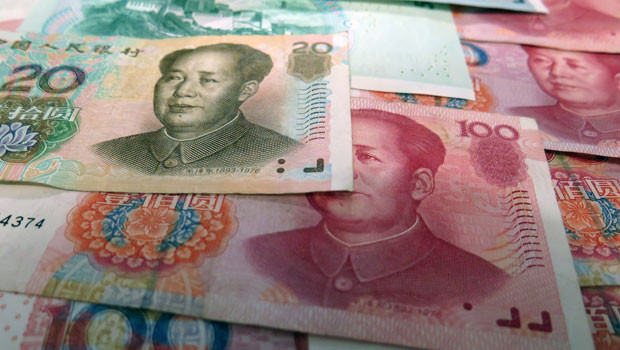Asia report: Stocks rise on strong China manufacturing data

Markets in the Asia-Pacific region were generally buoyant by the close on Friday, with significant gains in Japan, China, and South Korea.
News from China, where the central bank cut reserve requirements, seemed to lift investor sentiment, while trading in Hong Kong was suspended for the day due to the approach of Super Typhoon Saola.
“Asian equity markets exhibited a positive trend this morning, driven by China's proactive measures to bolster its economy,” said Stephen Innes at SPI Asset Management.
“The People's Bank of China took a significant step by reducing financial institutions' foreign exchange reserve requirements for the first time this year.
“Contrary to recent trends, Chinese economic data has taken a more favourable turn for investors.”
Innes noted that the headline Caixin manufacturing PMI showed a substantial increase, rising to 51.0 in August from 49.2 in July.
“The National Bureau of Statistics (NBS) and Caixin manufacturing PMIs reported robust figures for new orders and output for July to August, surpassing consensus expectations by a considerable margin.
“These encouraging numbers may be indicative of an early-stage stabilisation in manufacturing activity.”
Markets in east Asia rally, Australasian bourses slip
Japan's Nikkei 225 index closed up 0.28% at 32,710.62, while the broader Topix index saw a more considerable gain of 0.76% to finish at 2,349.75.
Among the top performers on Tokyo’s benchmark were Kawasaki Kisen Kaisha, gaining 4.07%, Kobe Steel, up by 3.88%, and Inpex Corporation, which increased by 3.24%.
In China, the Shanghai Composite and the Shenzhen Component indices rose by 0.43% and 0.44% to close at 3,133.25 and 10,463.74, respectively.
Hangzhou Jiebai Group led the winners in Shanghai with a 10.03% surge, closely followed by Gansu Guofang Industry & Trade Group, which increased by 9.98%.
South Korea’s Kospi rose by a modest 0.29%, ending the day at 2,563.71.
Samsung Electronics notably saw a 6.13% increase in its stock, followed by Hyundai Steel and LG Household & Healthcare, up by 4.97% and 4.31% respectively.
While most Asia-Pacific markets traded higher, Australia’s S&P/ASX 200 index bucked the trend, declining by 0.37% to settle at 7,278.30.
Chalice Mining, Neuren Pharmaceuticals, and Fortescue Metals Group were among the most significant losers, falling by 7.28%, 6.52%, and 5.27%, respectively.
New Zealand's S&P/NZX 50 index also registered a slight loss, falling by 0.22% to close at 11,528.73.
Sky Network Television, A2 Milk Company, and Serko were the biggest laggards, declining by 3.2%, 2.2%, and 2.05%, respectively.
In currency markets, the dollar was last down 0.05% on the yen, trading at 145.46.
The greenback meanwhile advanced on both the Aussie and Kiwi dollars, strengthening 0.11% on the former to AUD 1.5439, and gaining 0.07% on the latter to change hands at NZD 1.6771.
On the energy front, Brent crude futures posted a marginal increase of 0.14% on ICE to $86.95 per barrel, while the NYMEX quote for West Texas Intermediate rose 0.24% to $83.83.
Economic woes in Japan and South Korea; China cuts forex reserve requirement ratio
In economic news, according to fresh data from au Jibun Bank, Japan's factory activity shrunk for the third month in a row in August.
The manufacturing purchasing managers' index (PMI) for the month came in at 49.6 - not only below the crucial 50-point threshold that separates contraction from expansion, but also a marginal dip from last week's flash estimate of 49.7.
It also remained stagnant compared to July's figure.
South Korea was not faring much better, with its own manufacturing sector experiencing accelerated contraction.
A private survey from S&P Global revealed that South Korea's PMI fell to 48.9 in August from 49.4 in the previous month.
That marked the 14th consecutive month that the index had remained below the neutral 50-point mark, signalling ongoing challenges for manufacturers in the country.
In a contrasting move, the People's Bank of China opted for further policy easing to boost its economic activity.
Starting from 15 September, the central bank said it would cut the foreign exchange reserve requirement ratio for financial institutions from 6% to 4%.
The move came on the back of a number of interest rate cuts in recent weeks, all aimed at bolstering the Chinese economy.
Elsewhere in China, the unofficial Caixin manufacturing purchasing managers’ index surprised the market to the upside, rising to 51.0 in August, after sliding to 49.2 in July.
Economists at Pantheon Macroeconomics noted that markets also missed their expectations on Thursday, when Beijing’s official PMI came in better than consensus.
“Today's Caixin outturn is broadly in line with the NBS measure, which also indicates an expansion in new orders and output, although the NBS headline is still hovering below the key level of 50,” Pantheon said.
“We believe the official measure portrays the manufacturing activity more accurately in recent times, for example, in reporting the disruption to the economy during the Covid exit waves.
“The official index has wider geographical coverage and a bigger sample size, [and] also has better coverage on bigger state owned companies, while the Caixin index has a stronger focus on light industries, also private and export-oriented companies.”
Reporting by Josh White for Sharecast.com.